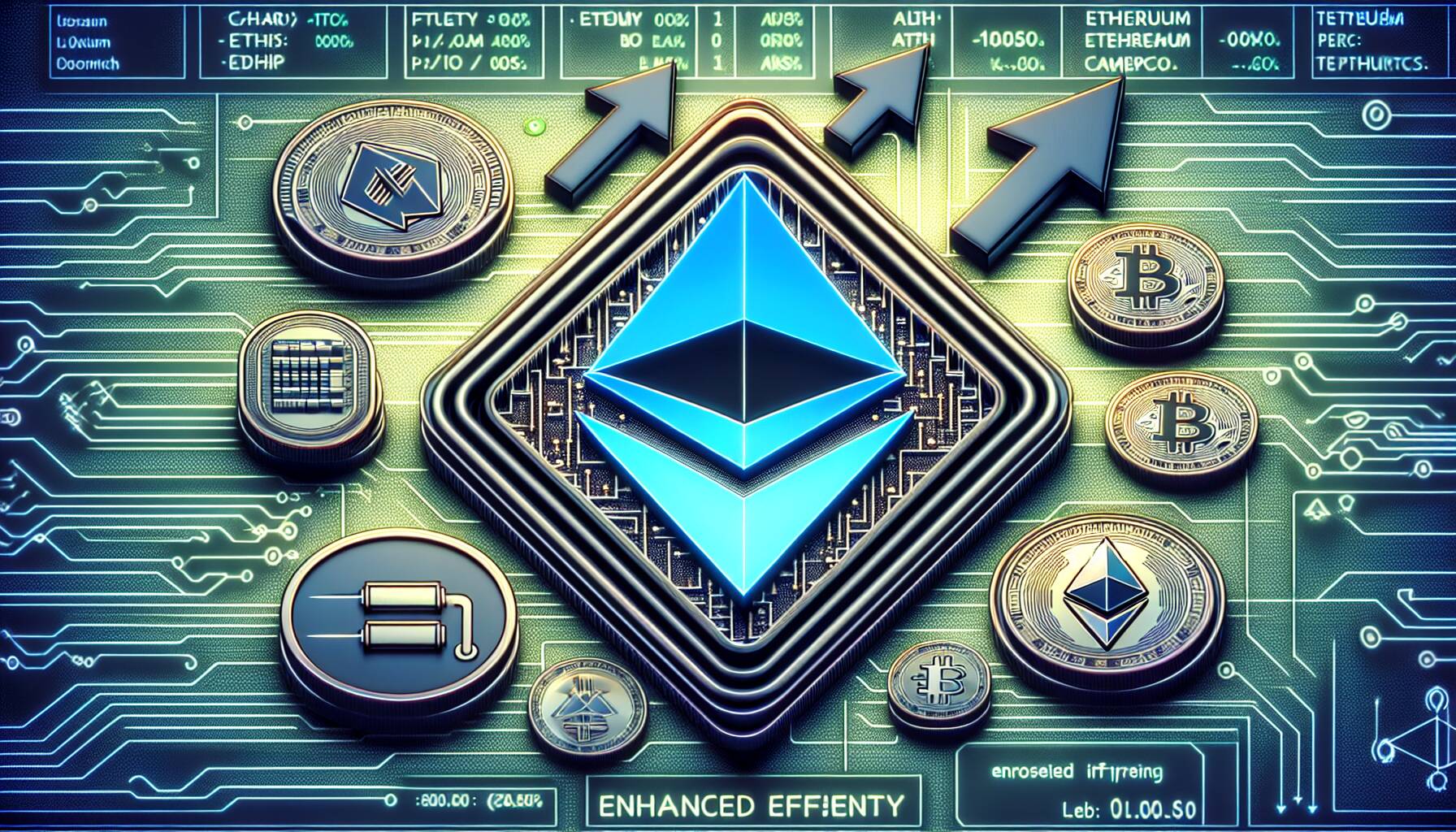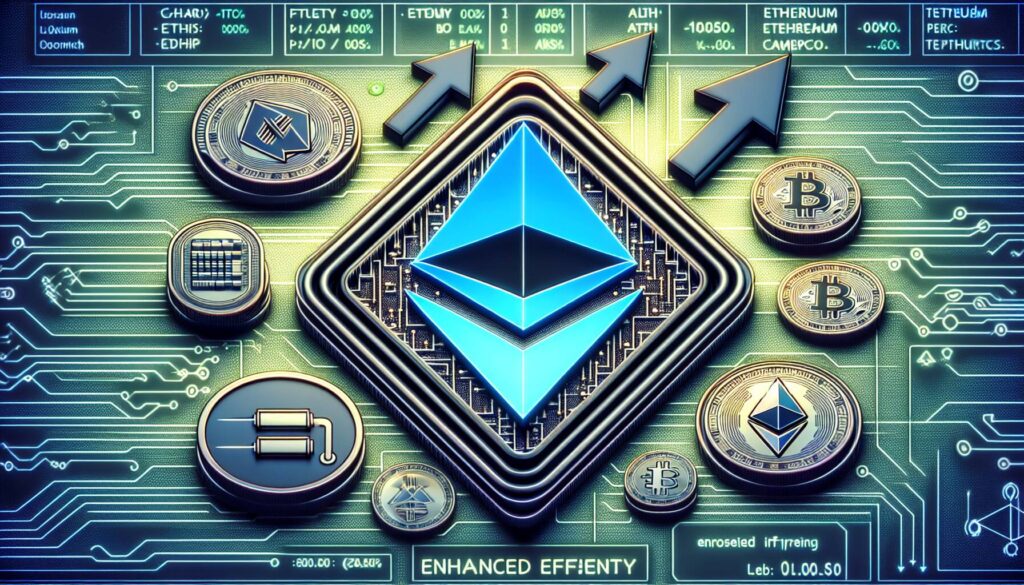Ethereum is gearing up for a significant transformation with the upcoming network upgrade, Fusaka, slated for December. This upgrade is anticipated to dramatically enhance user experience by reducing costs and boosting efficiency on the platform. According to asset manager VanEck’s September crypto market recap, Fusaka addresses one of Ethereum’s most pressing challenges: ensuring data availability for rollups, which are crucial scaling solutions that consolidate multiple transactions before they are finalized on the blockchain.
The core innovation of Fusaka lies in a method known as Peer Data Availability Sampling (PeerDAS). Unlike the traditional approach that requires every Ethereum validator to download all transaction data, PeerDAS streamlines this process, allowing validators to confirm blocks by sampling smaller segments of data. This revolutionary technique effectively decreases bandwidth and storage requirements, enabling Ethereum to safely expand its “blob” capacity—essentially the data slots utilized by rollups—without overburdening the network.
“Demand for these rollups is on the rise, with Coinbase’s Base and Worldcoin’s World Chain accounting for approximately 60% of all rollup data submitted,” noted VanEck, highlighting the growing importance of Layer 2 solutions in Ethereum’s ecosystem.
Furthermore, as the capacity increases through Fusaka, transaction costs for end users are expected to decrease, promoting a more accessible environment for all users. However, VanEck also pointed out that as the Ethereum network evolves, it is shifting away from being primarily driven by base layer fees. With more activity migrating to rollups, the revenue from mainnet fees has seen a decline, but this does not undermine the importance of ETH itself. Instead, the role of Ethereum as a secure layer for settling rollup transactions is becoming increasingly vital, emphasizing its status as a significant monetary asset.
Moreover, VanEck analysts expressed concerns regarding potential dilution risks for unstaked ETH holders, especially as institutional players are accumulating ETH for staking and yield generation. The firm posits that the Fusaka upgrade not only enhances Ethereum’s appeal by lowering Layer 2 costs but also solidifies its central role in a scaling ecosystem poised to attract further institutional interest and participation.
Ultimately, while technical hurdles remain, Fusaka stands as a crucial advancement in Ethereum’s roadmap, signaling significant implications for both everyday users and long-term ETH holders alike.

Ethereum’s Fusaka Upgrade: Key Points
The upcoming Fusaka upgrade is poised to transform the Ethereum blockchain experience significantly. Here are the critical aspects and their potential implications:
- Lower Costs for Users:
- Fusaka is designed to decrease transaction costs by enhancing the efficiency of rollups.
- Cheaper transactions could improve affordability and accessibility for everyday users.
- Increased Efficiency:
- The introduction of Peer Data Availability Sampling (PeerDAS) allows validators to verify blocks with smaller data samples.
- This reduces bandwidth and storage demands on the network.
- Boosting Blob Capacity:
- The upgrade allows Ethereum to safely expand its blob capacity, critical for rollups.
- This capacity expansion is necessary due to the increasing demand for rollup data.
- Shift in Fee Revenue Dynamics:
- As activity moves towards rollups, the mainnet fee revenue may decline, changing the economic picture for Ethereum.
- This shift emphasizes Ethereum’s role in securing rollup transactions rather than generating fees.
- Institutional Interest and Staking:
- As more institutional actors accumulate ETH for staking, there is an increased risk of dilution for unstaked ETH holders.
- Fusaka’s enhancements may attract more institutional adoption and strengthen Ethereum’s overall market position.
- Long-term Implications:
- The upgrade is seen as a foundational step toward Ethereum’s rollup-centric roadmap.
- Significant technological advancements could have lasting effects on user experience and investment confidence.
Analyzing Ethereum’s Fusaka Upgrade and Its Competitive Landscape
The upcoming Fusaka upgrade for Ethereum is poised to bring significant changes that could enhance user experience by lowering operational costs and increasing efficiency on the blockchain. Compared to similar advancements in the crypto landscape, such as Bitcoin’s Lightning Network aimed at speeding up transactions, Fusaka’s focus on data availability and efficiency particularly sets it apart. The novel Peer Data Availability Sampling (PeerDAS) technique demonstrates Ethereum’s commitment to solving scalability issues that have historically hindered its adoption.
Competitive Advantages: The adaptation of PeerDAS in the Fusaka upgrade offers Ethereum a unique competitive edge. Unlike Bitcoin, which faces challenges in transaction speed and cost-efficiency, Ethereum’s ability to enhance rollup data management places it in a strong position as demand for decentralized applications surges. This development not only reduces bandwidth usage but also addresses Ethereum’s scaling problems directly. Furthermore, by allowing for an increase in the blob capacity, Fusaka could potentially translate into cheaper transaction fees for users, making Ethereum more attractive in a crowded market.
Disadvantages: However, with these advancements come potential pitfalls. The warning from VanEck regarding dilution risks for unstaked ETH holders indicates that while institutional interest grows, average users may feel sidelined. As larger entities stake their ETH for yield, the proportional ownership and benefits for smaller holders could diminish. This scenario poses a threat by creating a divide between institutional players and individual users, possibly deterring grassroots adoption.
Who Stands to Benefit or Suffer? Fusaka’s implementation will likely benefit users who rely on Ethereum’s rollup solutions, as they will enjoy lower costs and improved transaction speeds. Additionally, institutional investors may find Ethereum increasingly appealing due to its enhanced security and scalability, further solidifying its position as a monetary asset. On the flip side, concerns surrounding the dilution of ETH for non-staking holders could foster dissatisfaction. As Ethereum shifts more towards a yield-driven model, regular users risk being left out of the economic advantages afforded to institutional players, potentially complicating Ethereum’s community dynamics.















